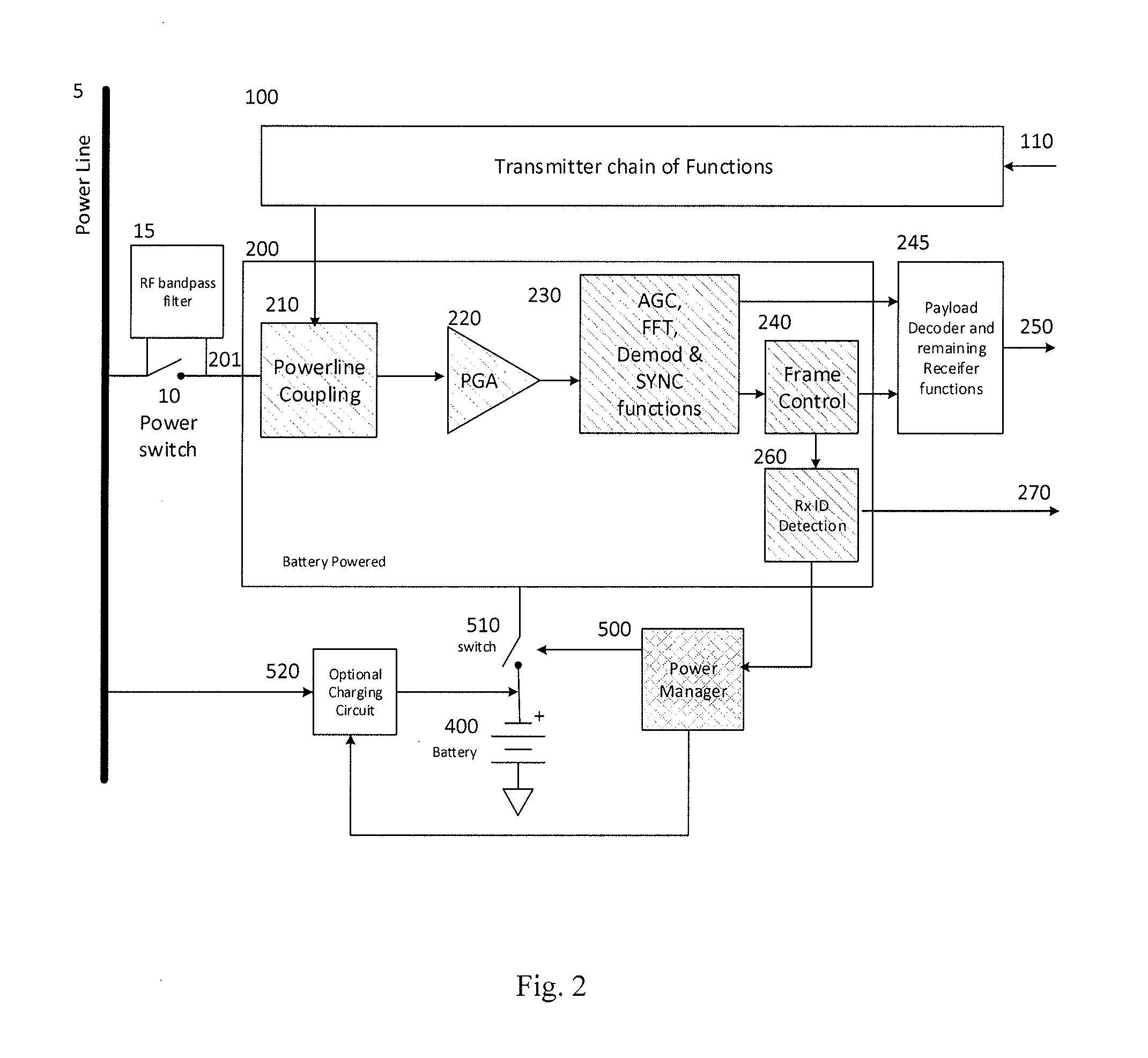Zero Standby Power for Powerline Communication Devices
- Summary
- Abstract
- Description
- Claims
- Application Information
AI Technical Summary
Benefits of technology
Problems solved by technology
Method used
Image
Examples
Embodiment Construction
[0011]The making and using of embodiments are discussed in detail below. It should be appreciated, however, that the present disclosure provides many applicable inventive concepts that may be embodied in a wide variety of specific contexts. The specific embodiments discussed are merely illustrative of specific ways to make and use the invention, and do not limit the scope of the invention.
[0012]The present disclosure will be described with respect to embodiments in a specific context, namely a method and apparatus for improving the standby power consumption of network connected systems. Embodiments of this invention may also be applied to other circuits and systems, such as, but not limited to, wireless systems such as wireless communication systems.
[0013]Some attempts at reducing the energy consumed by electrically powered devices in a standby mode are to use a remote control as a stimulus to trigger a mechanism that powers on the system. Some examples of these types of systems are...
PUM
 Login to View More
Login to View More Abstract
Description
Claims
Application Information
 Login to View More
Login to View More - R&D
- Intellectual Property
- Life Sciences
- Materials
- Tech Scout
- Unparalleled Data Quality
- Higher Quality Content
- 60% Fewer Hallucinations
Browse by: Latest US Patents, China's latest patents, Technical Efficacy Thesaurus, Application Domain, Technology Topic, Popular Technical Reports.
© 2025 PatSnap. All rights reserved.Legal|Privacy policy|Modern Slavery Act Transparency Statement|Sitemap|About US| Contact US: help@patsnap.com



